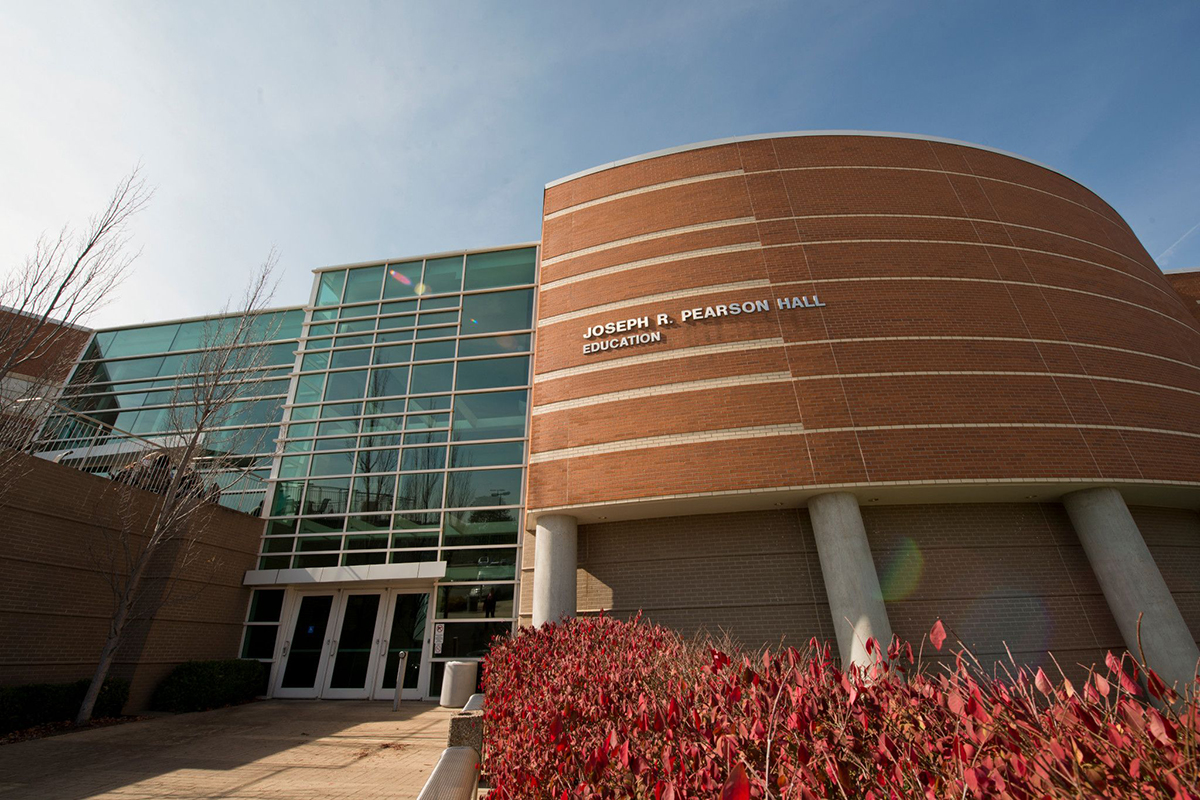New books examine how to foster meaningful interactions between students, faculty to bolster college success

LAWRENCE — Two new books co-written by a University of Kansas education researcher examine how to move beyond the conventional measures of student-faculty interactions to consider new ways of building meaningful relationships between educators and pupils.

Eugene T. Parker III, associate professor of educational leadership & policy studies at the University of Kansas, and Teniell L. Trolian of the State University of New York – Albany, have dedicated nearly a decade of research to better understand how students and faculty interact in higher education and how that affects student success. They noticed literature in the field tended to focus largely on frequency of those interactions. The result is two books that consider college environment, different types of interactions and the quality of those experiences to help educators provide meaningful engagement.
Engagement in undergraduate education
Trolian and Parker co-edited “Fostering Sustained Student-Faculty Engagement in Undergraduate Education.” The book brings together educators and scholars to discuss how to improve and foster student-faculty interactions in four parts:
- Frameworks for thinking about student-faculty engagement.
- Student-faculty experiences that improve undergraduate outcomes.
- Student identities and student-faculty engagement.
- Student-faculty experiences in the undergraduate classroom.
Traditional research that focuses largely on frequency of student interactions with faculty only looks at part of the experience, according to the editors and authors.
“During college, students are hopefully transformed in some way by the environment, which leads to positive outcomes,” Parker said. “We look at how student-faculty interactions influence or impact things like degree aspirations, sense of belonging and perceptions of the environment.”
The editors urge educators to first consider student identities, including race, religion, age, socioeconomic status, veteran or disability status, if they are first generation college students and other factors.
Further, faculty should consider their interactions with students beyond the traditional lens of experiences in the classroom or during office hours. That could include feedback on students’ work, how they communicate outside of the class, providing services such as letters of recommendation or even social interactions. And instead of simply considering frequency of interactions as a sort of quota to meet, editors said quality of interactions must be considered as well.
“We want students to have positive interactions, and we want to make sure it’s not just minimizing interactions that might be negative, but providing the types of experiences that foster success,” Parker said.
To that end, authors contribute chapters on considering new modalities of interactions. Today’s students have learned remotely during the pandemic and virtually in ways that were unavailable just a few years ago. Faculty can therefore be accessible in ways including video conferencing that can be both convenient and meaningful for students.
The book’s contributors encourage faculty to look beyond student identities. In fact, they should consider their own identities and experiences in shaping their engagement with students.
“One thing we’ve learned is that we need to work toward sustained engagement instead of just one or two interactions here or there,” Parker said. “Building those relationships can allow students and faculty to be comfortable enough to have critical conversations together. We also need to think about faculty members. When we have conducted research on student-faculty interactions, it’s largely been surveys of students’ experiences, but not of the faculty. That’s something we need to consider more.”
The book closes in encouraging faculty to consider student outcomes beyond the traditional measures of grade-point average or graduation rates. Students’ sense of belonging, perceptions of campus environment, psycho-social well-being and how interactions affect each of those are meaningful as they can all influence the more traditional measures. Parker said post-college measures beyond employment, such as civic engagement and long-term mental health, hold value as well.
Meaningful experiences in graduate education
Students who have continued their education to graduate level courses also benefit from sustained, quality engagement with faculty. To that end, Parker and Trolian co-edited “Promoting Meaningful Student-Faculty Experiences in Graduate Education.”
The book also brings scholars from across the country to contribute chapters on fostering meaningful engagement, in this volume in three parts:
- Curriculum and teaching.
- Identity and experiences.
- Graduate student mentoring.
“There are similarities in interactions, but there are also some key differences,” Parker said. “In graduate contexts, it’s very discipline-specific. In many fields, for example, it will be research heavy and require a greater emphasis on mentoring, considering how closely faculty and students work together on research. Mental health is also key.”
Both works, published by Routledge, are part of Parker and Trolian’s work to build a conceptual map of the facets of student-faculty interactions. Such a map can not only help faculty find their way to providing meaningful interactions, but to understand there is no single route that will ensure success.
“We are not attempting to provide a one-size approach that will work for everyone,” Parker said. “We need to understand that every student is different and be malleable and adjustable in our approaches.”